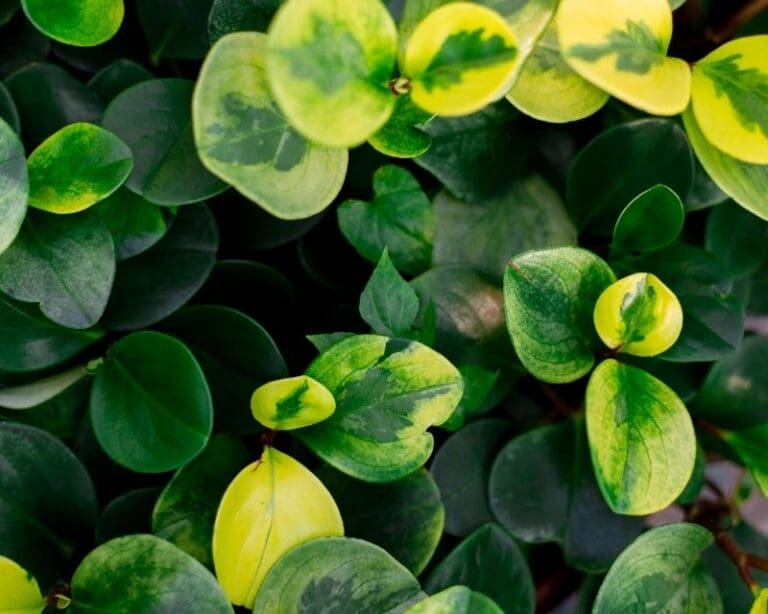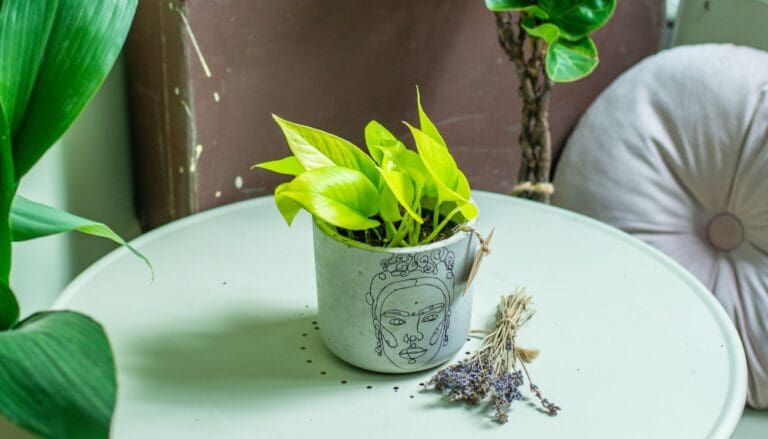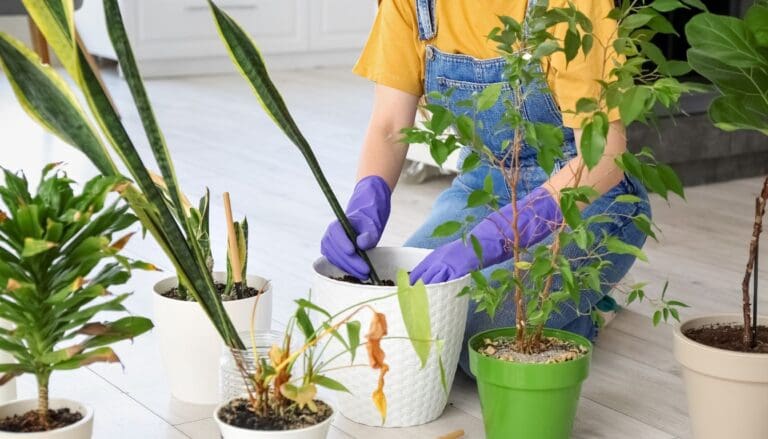Root Rot In Money Tree: Signs & How To Save!
Root rot is a common issue caused by overwatering, posing a serious threat to your money tree. In this article, we’ll explore signs of root rot in money trees and how to remedy it.
To save your money tree from root rot, inspect its roots, prune damaged parts, and replant it in fresh, well-draining soil. Adjust your watering routine to prevent future problems. After repotting, continue providing attentive care and maintain a balanced environment for your money tree to recover swiftly and foster new growth.
Now, We’ll delve into the primary causes of root rot and effective solutions to tackle this issue, starting with recognizing the signs and moving on to treatment.
Let’s discover everything you need to know about combating root rot in your money tree.

Please note: Simplify Plants is reader-supported. Some links in the post are affiliate links and I get a commission from purchases made through links in the post.
Signs of root rot in money tree
If your money tree is affected by root rot, you will see specific signs on your plant. The plant might not show any sign initially, but it will show symptoms if it suffers for an extended period.
It can be challenging to understand the reason behind the signs as some are similar to other problems. However, if you can identify them on time, it will be easier for the plant to recover quickly.
We have discussed all the possible signs that can tell you that your money tree suffers from root rot.
1) Root rot often leads to the slow growth of money trees.
If the roots suffer from root rot, they will fail to absorb the nutrients and water from the soil. Due to a lack of nutrition, the money tree will not be able to grow.
If your money tree is not growing enough, you might want to check its roots to determine if they are suffering from root rot.
However, you should not worry if you don’t see much growth in winter, as the plants don’t grow much during the dormant period.
2) The foul smell from the soil is the most easily detectable sign of root rot.

When plants suffer from root rot, the roots start giving out a foul odor. If you suspect root rot in your money tree, you should smell the soil to determine if it smells musty.
During root rot, there is a growth of bacteria in the soil due to a lack of oxygen and the presence of excess water. The foul smell is a result of this condition.
3) Wilting leaves are often a common sign of root rot.
If the leaves of your money tree don’t get water or nutrition for long, they will start wilting.
A lack of water and nutrition causes weakness in plants, due to which the leaves lose the ability to stay firm.
If your money tree suffers from root rot for some time, its leaves will start wilting. If you notice leaf wilting in the plant, you should examine the routes immediately.
Also Read: Why Is My Money Tree Dying? (Pachira Aquatica Dying)
4) Root rot in money trees often causes damaged roots
If you examine the roots of your money tree and find out that the roots have turned brown and their texture is soft or mushy, it is due to root rot.
When your plant’s roots are healthy, they will remain white and crisp. If the roots suffer from root rot, they change color and texture.
If the roots are pulled even softly, they can break easily. The roots lose their strength and become weak. Therefore, checking the plant’s roots by removing them from the pot is the only way to determine if it is suffering from root rot.
5) Discolored leaves are an early sign of root rot in the money tree.

If you notice yellow and discolored leaves on your money tree, it might be an above-the-soil sign of overwatering and root rot.
When you have a healthy money tree, its leaves will remain green and shiny. In the case of root rot, the roots stay in an unhealthy condition that affects all parts of the plant, making the leaves dull and yellow.
Also Read: Why Are My Money Tree Leaves Turning White? (Causes+How To Fix)
What causes root rot in the money tree?
We have already mentioned that overwatering is a reason behind root rot. But there can be many other reasons that can cause root rot in your money tree.
1) Overwatering is the primary cause of root rot in money trees.
The money tree owners can overwater their plants out of too much care. However, that doesn’t do any good and causes root rot in the plants.
The money trees prefer infrequent watering and will not tolerate frequent and overwatering.
If your money tree sits in the water for an extended time, its roots will suffocate due to lack of oxygen and remain wet for long.

2) Poor drainage often leads to root rot in money trees.
A poor drainage system can cause overwatering even if you give your money tree the right amount of water.
If the container of your money tree does not have drainage holes, the water will not be able to pass out of the system, so the soil will retain too much water.
Along with the soil, the plant’s roots will also remain moist and start rotting. This condition can also cause fungus and bacterial infections besides root rot.
Also Read: How Much Light Does A Money Tree Need? (Money Tree Light Requirements)
3) Inappropriate soil Mix often leads to root rot.
You cannot use the same soil for all your plants because each requires different soil.
If you choose the incorrect soil, it will affect the plant’s health and cause harm to it.
The money tree requires well-draining soil to drain the excess water out of the pot so that the plant does not have to sit in the water for long.
If the water takes much time to drain, you should repot your money tree using well-draining soil.
4) Low light often leaves the soil wet for a long leading to root rot.
Low light is not an ideal condition for the money trees. The money trees enjoy bright and indirect sunlight throughout the day.
If you place your money tree in low light, all the processes will slow down, and the water will take a long time to dry.
Due to low light, the photosynthesis process will slow down, and the roots will remain wet, causing root rot. This will also invite bacteria and fungi.
5) An extra-large pot can hold excess water, leading to root rot.

Many plant owners mistakenly place their plants in oversized pots, thinking they will not need to repot them. However, a larger pot can have adverse effects on the plant.
If you place your money tree in an oversized pot, the pot will contain excess water that will take more time to drain out of the pot.
As a result, you will water more frequently, keeping the soil and the roots of the plant wet without giving them enough time to dry.
Therefore, choosing the correct pot size is essential for the well-being of your money tree.
How to treat root rot in a money tree?
Repotting is the best solution to fix root rot in the money tree. If you repot your money tree, it will help the roots and soil to recover.
Root rot is a severe problem in money trees that can be deadly if you don’t treat the plant quickly. It is best to treat your money tree as soon as you identify the issue.

Let’s take a look at the steps of repotting a money tree after root rot:
- The first step is getting the money tree out of its current pot. Always be gentle while removing the plant from the container, or you might notice the plant is damaged.
- Gently pull the money tree out of the container by holding the base of the plant.
- After the plant is out, examine its roots and try to remove the soil around it.
- You can place the roots under running water to remove the soil. This will also help to get rid of the bacteria.
- Eliminate the damaged parts of the plant – roots, stems, and leaves. Use sterilized pruners to prune these.
- Keep the roots in an aerated area for a few hours to let them dry.
- You can briefly soak the roots in a bleach-water solution to kill the fungi and bacteria. If you want to use the old pot, consider washing the pot with the same solution.
- Put some pebbles at the bottom and fill the pot with fresh soil mix. This will prevent the drainage holes from getting blocked.
- Place the plant in the middle of the pot, add soil from all sides to fill all the space, and let the plant stand upright.
- Place the repotted money tree under indirect light and water the plant only if the soil is dry.
- Avoid fertilizing the money tree for at least a month so that it can recover from the stress caused by root rot and repotting.
- In case of mild root rot, you don’t have to wait a month and fertilize when the plant seems healthy and out of stress.
- Remember not to overwater the money tree again, and always check the moistness of the soil before watering the plant.
How to prevent root rot in money trees?
If you try to understand the basic requirements of your money tree and provide everything accordingly, you will be able to prevent root rot.
You can come across different opinions regarding the care of the money tree, but you should experiment and check the response of your plant before deciding what is suitable for the plant.
If you check your plant’s response, you will not end up overwatering or over-feeding it with fertilizer. If your plant is stressed due to something, you will know it, and you will be able to control it before anything serious occurs.
If you want to prevent root rot in your money tree, you need to follow these:
- Avoid overfeeding the money tree with fertilizer.
- Avoid watering the money tree without checking the moisture inside the soil.
- Use soil that supports well drainage.
- Never keep your money tree in low light for an extended period.
- Don’t use contaminated pruners to prune the plant or contaminated pot to repot the money tree.
- Avoid placing the money tree in low-temperature and low-humidity areas.
- Use the correct-sized pot.
- Avoid placing the plant with new plants that you have brought to avoid chances of pest infestation.
If you check the points mentioned above, you will be able to prevent root rot in your money tree.
Tips for a thriving money tree

- Place the money tree in a sunny spot where it regularly gets six to eight hours of filtered light.
- Whenever fertilizing the money tree, dilute the fertilizer to avoid overfeeding it.
- Keep the money tree in an area that receives good air circulation.
- Avoid placing the money tree near heating machines or fireplaces.
- Keep the money tree away from the window to protect it from frost and cold drafts.
- Maintain a balanced environment with proper temperature and humidity levels that suit the money tree.
- Always use sterilized pruners to prune the money tree.
- Water the money tree if the soil feels dry when you touch it.
- When propagating the money tree, never get an unhealthy cutting.
- Don’t relocate the plant too often, as it can cause stress.
Reference: WIKIPEDIA.
Recommended Garden Supplies
| Product Image | Our Recommended Gardening Supplies | Check Offers! |
|---|---|---|
Top Top
Top
Top
Top
Top
Top
Top
Top | rePotme Houseplant and Tropical Classic Potting Soil Mix | Check Offer On Amazon |
 Top
Top
Top
Top
Top
Top
Top
Top | Espoma Organic Indoor Plant Food | Check Offer On Amazon |
 Top
Top
Top
Top
Top
Top
Top
Top | GooingTop LED Grow Light 6000K Full Spectrum Clip Plant Growing Lamp | Check Offer On Amazon |
 Top
Top
Top
Top
Top
Top
Top
Top | Soil Moisture Meter | Check Offer On Amazon |
 Top
Top
Top
Top
Top
Top
Top
Top | Govee Hygrometer Thermometer, Bluetooth Enabled! | Check Offer On Amazon |
 Top
Top | LEVOIT Humidifiers for Large Room(Best For Plants) | Check Offer On Amazon |
 Top
Top
Top
Top
Top
Top
Top
Top | Upgraded DIY Automatic Drip Irrigation Kit, 15 Potted Houseplants Support | Check Offer On Amazon |
 Top
Top
Top
Top
Top
Top
Top
Top | Stainless Steel Heavy Duty Gardening Tool Set | Check Offer On Amazon |
 Top
Top
Top
Top
Top
Top
Top
Top | Bonide Insecticidal Soap | Check Offer On Amazon |
 Top
Top
Top
Top
Top
Top
Top
Top | Bonide 32 oz Spray Neem Oil for Organic Gardening | Check Offer On Amazon |
 Top
Top
Top
Top
Top
Top
Top
Top | Garden Safe Fungicide | Check Offer On Amazon |






